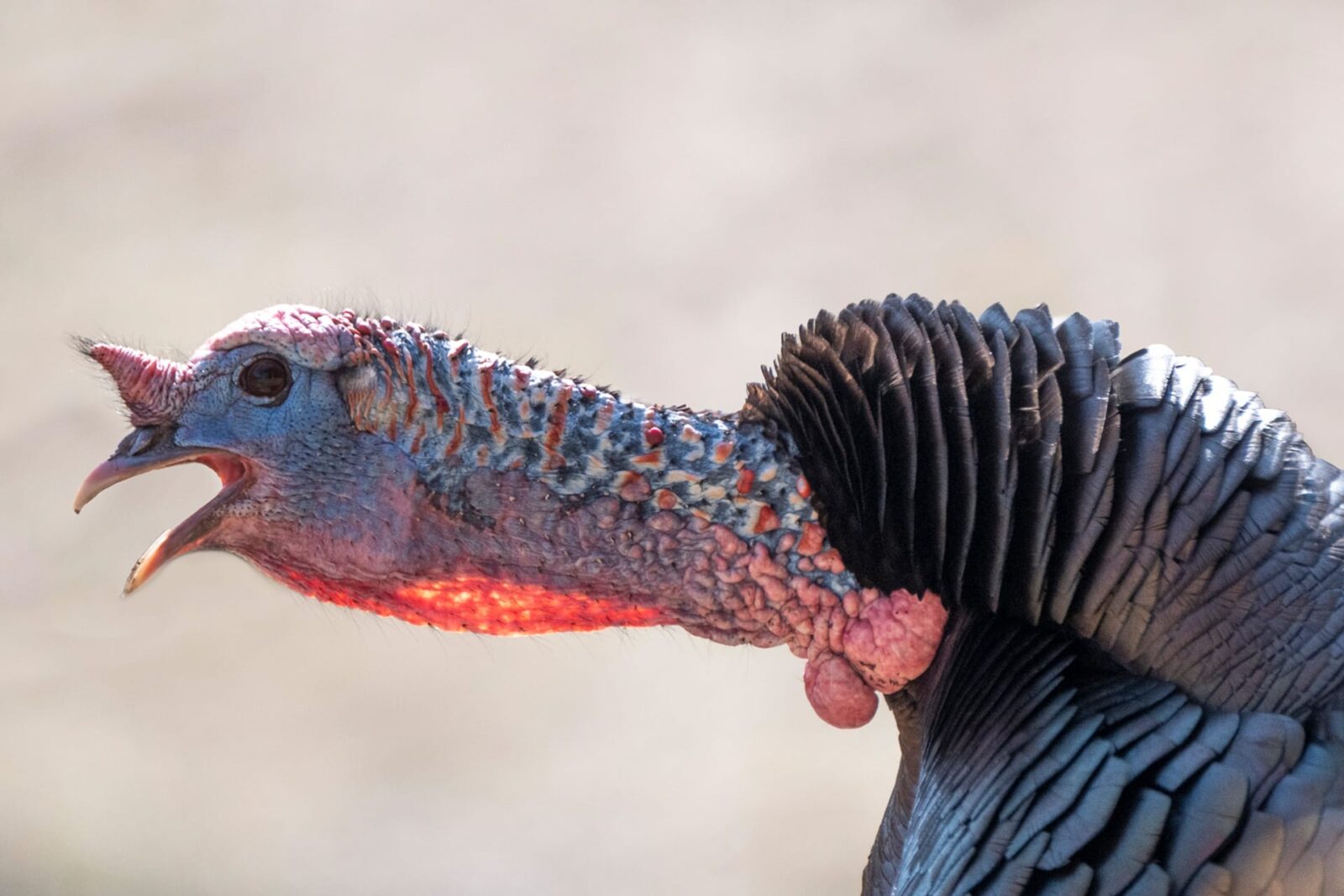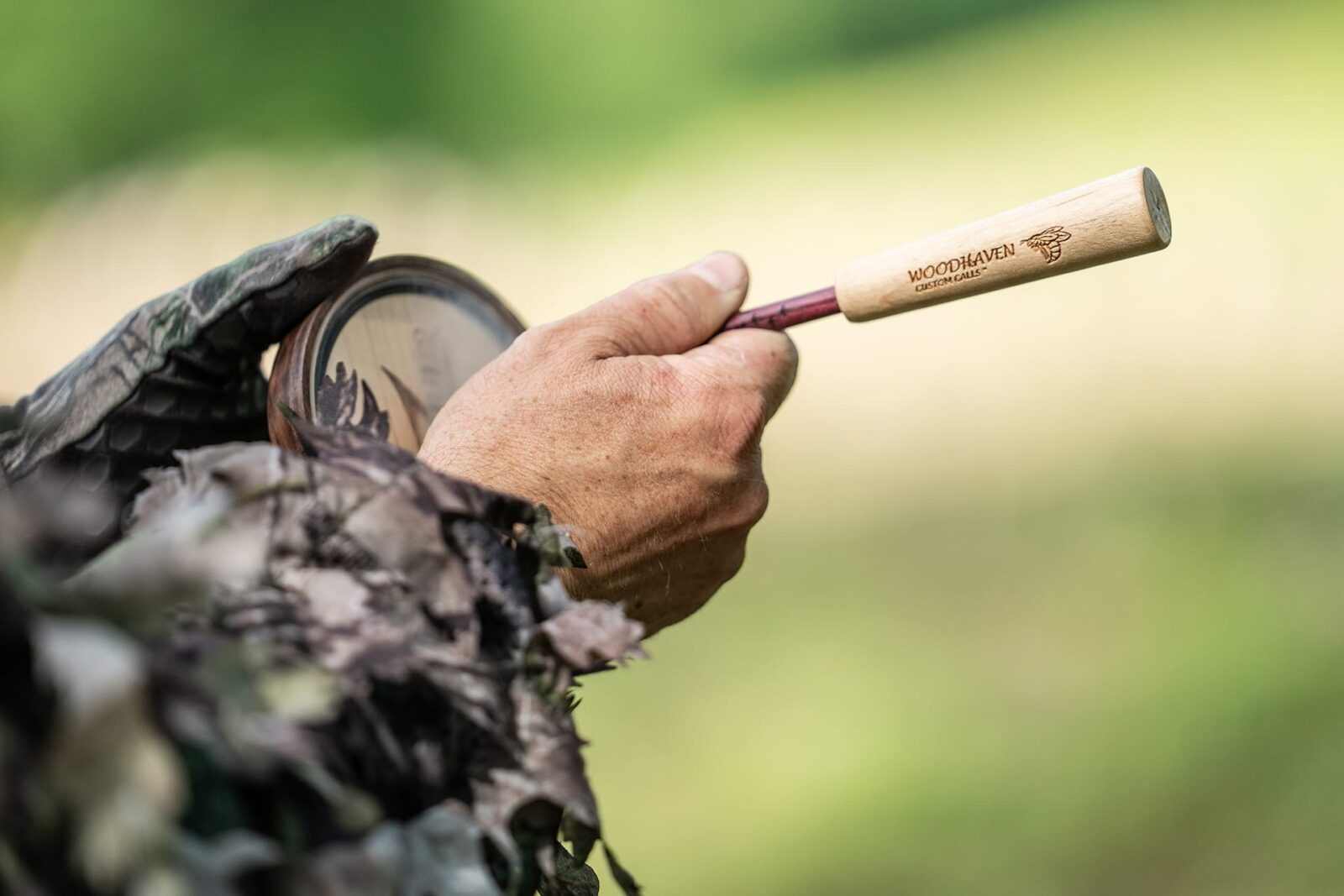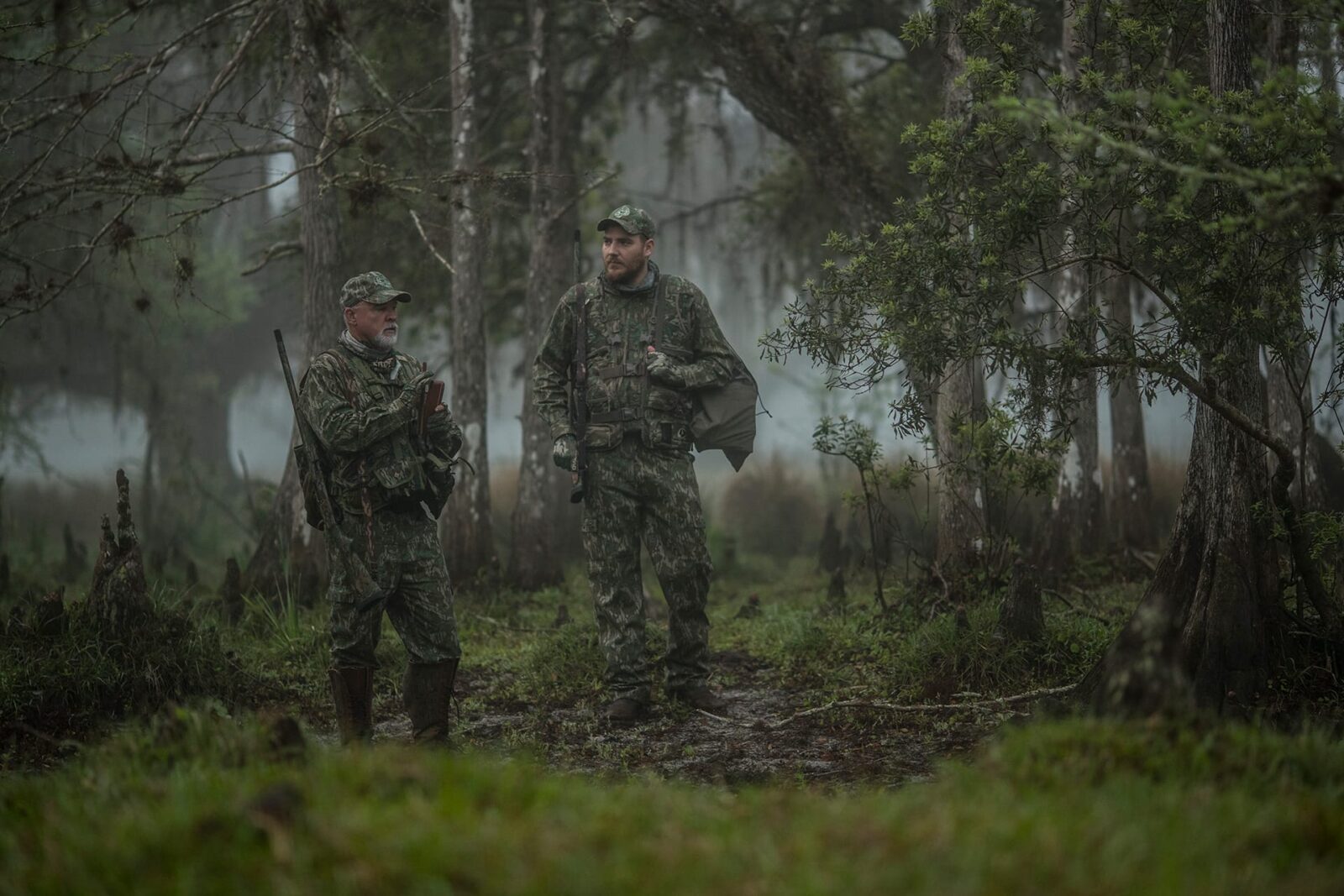Wild turkeys are noisy. Unlike nearly all other game we hunt, it’s the turkey that yelps, clucks, cuts, and gobbles, letting us know exactly where it is. That’s not to say turkey hunting is easy for this reason; in fact, the call of the turkey and trying to replicate it are arguably what makes turkey hunting so appealing to the 2.5 million hunters who take to the woods every spring. But how much do you know about turkey calls and how to use them?
With insights from onX Ambassadors and avid turkey hunting enthusiasts, we discuss the history, nuance, types, and how-tos of turkey calls.
History of Turkey Calls
Wild turkeys are native only to America, and turkey calls have been dated back to 6,500 B.C. These first calls were made by Native Americans from turkey wing bones and are aptly called wing bone calls or yelpers. One of these is even part of the Smithsonian’s National Museum of the American Indian. Many hunters still make and rely on these calls today. They’re simple to construct and not difficult to use. While cupping one hand around the thick end, you insert the thinner end in your mouth, form a tight seal with your lips, and produce a mock “kiss” by sucking air in abruptly.
Wing bone calls were the primary calls used for turkey hunting up until the late-19th century. This is when settlers began using diaphragm and friction calls too. Around 1880, Charles Jordan began making bone yelpers in large quantities while also penning articles about the calls in Field & Stream magazine, noting their embedded and long history with Native Americans.
Scratch box calls were patented in 1900 by a North Carolina Confederate veteran of the Civil War named Hardy Draughon, but it was Alabamian Mike Lynch who was the first to mass-produce and market multi-piece box calls in 1939, which were made entirely of cedar wood at first. He later changed to gluing together walnut lids and mahogany sides.
Another resident of Alabama, Jim Radcliff, Sr., is credited with developing the mouth diaphragm call in the 1920s, although he may not have invented it. The story goes that while Radcliff was in New Orleans to receive treatment for rabies he came across a ventriloquist. He listened to the performer make bird calls and asked him if he could imitate a turkey call. The ventriloquist tried but failed, but he told Radcliff that he could make a call for him to us. The street performer made a frame out of lead and used some latex from a condom to construct a small mouth call. He taught Radcliff how to use it.
Radcliff brought the call back to Alabama and used it successfully. By 1953, a national hunting magazine profiled Radcliff and his mouth call, and ever since the secret of its effectiveness was out.

Turkey Call Sounds
If you judged a turkey by its feathers you might suppose the bird isn’t articulate. However, biologists have found turkeys to be one of the most vocal birds we have. Wild turkeys have at least 29 different vocalizations or calls. Being able to replicate all of them would be a lifetime’s work, but hunters should be able to recognize and reproduce several key calls.
Below we have a small sample of turkey call sounds, and thanks to our friends at the National Wild Turkey Federation (NWTF) you can listen to recordings of actual turkeys.
Gobble
Perhaps the most recognizable of all turkey sounds is the gobble. This is the sound toms make to let all the other turkeys in the area that he’s there and ready to mate, so not only is it aimed at getting a hen’s attention but a big tom will use it to intimidate young jakes and smaller toms.
Yelp
A staple of any caller’s arsenal, the yelp is looked at as the main form of communication a hen makes. The yelp is a locating call, helping hens find other turkeys in the area and beckoning them to join her. This applies to hens and toms. If you can fire a hen up enough, she may have to come and investigate, even if she has to drag that tom with her.
Cutting
Cutting is usually heard as a rapid and sharp series of clucks. This is an excited call made by a hen to grab the attention of a tom—she’s fired up and wants the tom to know it. If you’re in the woods hearing cutting, you are probably hunting at or near the peak levels of the breeding season and excitement.
It can also serve as another form of communication between hens when they are agitated with each other. If a turkey is henned-up, you can try agitating his hens to a boiling point. They may have to come settle the dispute—with a tom in tow.
Soft Yelps, Clucks, and Purrs
These are low-volume calls that signify contentment. They can translate to safety and security for other birds and can be your best weapon to get a turkey to close down that final 50 yards.
Using a less-is-more strategy, lower your volume when the toms break into the 100-yard range. The soft calls will reassure the tom that everything is safe and entice it to come and find you. These are some of the most crucial calls when it comes to finishing the hunt.
What goes into making a turkey call?
We follow the life of a turkey call from its beginnings as a plank of wood, to bringing it in the woods to yelp up a gobbler. Come along as we learn how a turkey call is made, and then see if we can get a long beard in gun range with it.
Types of Turkey Calls
There are many modern-day turkey calls, so rarely does an avid turkey hunter use only one. The challenge, however, is not always in picking which calls to use when; it’s knowing how to use each call effectively and realistically. All turkey calls take practice, but some are a little more “fool-proof” than others. Broadly, turkey calls are lumped into three categories: Friction Calls (Push-Button, Box, and Slate), Diaphragm/Mouth Calls, and Locator Calls. Let’s look at the different types of turkey calls on the market:
Push-Button Turkey Calls
These are those supposed fool-proof calls that are great for beginners. These calls use the friction of two pieces of wood rubbing together and can create clucks, purrs, or yelps. The hunter pushes a spring-loaded wood dowel that’s attached to a block of wood. The wood block rubs against a pyramid-shaped piece of wood to create different sound patterns depending on the intensity with which the dowel is pressed.
Slate Turkey Calls
Another friction call, sometimes called pot calls. These are made from a round disc of slate, ceramic, or glass and paired with a striker of wood, carbon, or aluminum. The hunter scrapes the disc (AKA pot) with the striker at various angles to make different types of sounds. Different sounds also come from using different combinations of pots and strikers. These calls take a lot of practice.
Turkey Box Calls
One of the oldest friction calls, as noted above, the box call makes sound by scraping the lid (or paddle) of a wooden box across the box’s thin edge. The lid is often attached by a single screw and with this call a hunter can create yelps, clucks, cuts, purrs, cackles, whines, and many more turkey sounds. It’s a favorite among most turkey hunters.
Turkey Mouth Calls
These diaphragm calls are horseshoe-shaped and primarily made with rubber or latex reeds that vibrate to create virtually any turkey sound. They’re favored by hunters because they are versatile and small, but also because they are hands-free to use. Two drawbacks of mouth calls are the amount of practice they require and that they are not extremely loud calls. If you’re trying to call a tom from a long distance, a box call will produce more sound.
Turkey Locator Calls
These calls are used by turkey hunters but they don’t sound like turkeys at all, and that’s the point. As we know, turkeys are loud birds and we need them to make sounds to give up their location. That’s what locator calls do. They are calls that mimic other animals, typically an owl, hawk, coyote, or crow, and we can get a big tom to gobble from wherever he’s hiding.

Tips for How To Call Turkeys
We now know many of the sounds turkeys make, and we know what kinds of different calls we can have with us in the field. Now we bring in our expert turkey hunters and onX Hunt Ambassadors to give us proven strategies for taking more talkative toms.
“If you are new to turkey hunting, learning to cluck and yelp are crucial. If you can learn those two calls, the rhythm and cadence of a real hen, you can kill turkeys.” –Hunt Club TV’s Phillip Culpepper
“Nothing beats the versatility of a mouth call. When a long beard is moving in close and any unnecessary movement might cost you the hunt, being able to yelp without a call that requires your hands is irreplaceable. Although using silence and knowing when not to call in these situations is as valuable as your call itself.” – Mossy Oak’s Daniel Haas
“A mouth call is more versatile in that it is capable of effectively replicating a bigger range of the turkey vocabulary than any other call: gobbles, kee kees, yelping, cutting, clucking, and purring. A mouth call also doubles as a locator call for me because I can get a pretty realistic coyote bark and howl out of one.” –Writer and Outdoor Video Producer Shane Simpson
“Box calls I love to use to locate gobblers once they are on the ground, well after they fly down from a roost. I almost never use a box to call to a bird early in the morning when they are still on a limb. Once a bird is on the ground, and if he’s giving me a hard time, I’ll go to the box to get a response then make adjustments to my setup. When just looking for a bird to hunt any time of the day, the box call is always my first try to raise a gobble and it works often.” –Mossy Oak’s Rusty McDaniels
“Mouth calls are king for me, with pot/peg being a close second. A friction call will be louder and carry further in some environments when you need to push sound over more country. Mouth calls are nice for working birds inside 100 yards because of the realism and lack of movement. I would suggest mastering cutting and yelping first. Soft clucks are also a good one. Practice varying degrees of volume on those different sounds and excitement levels.” –The Hunting Public’s Aaron Warbritton
“I find myself using a mouth call a lot. However, if I had to pick one type of call to be stranded on an island with it would definitely be a box call. The realism and reliability of a good box are unmatched in my opinion.” –Hunt Club TV’s Phillip Culpepper
“I like having all my calls available and I’ll use certain calls in specific situations. For instance, if I decide I need to tree call it’s with a diaphragm. It might be just me, but I like to walk and prospect with a loud box call. Once I get a bird working, I love to cluck and purr with a slate or glass call. If he is close and could possibly see me, I am back to a diaphragm.” –Mossy Oak’s Bobby Cole
“If it’s early in the season, or I’m hunting out west where I might encounter flocks of turkeys, I’ll use about every call I can to sound like a flock. These calls would be yelping of various pitches, tones, and cadences to sound like multiple hens, along with jake yelps and gobbles to sound like various and different age classes of gobblers. The real flock, in many cases, just can’t resist coming over to check out this ‘new’ flock in the neighborhood.” –Writer and Outdoor Video Producer Shane Simpson
“I like to use ‘kee kees’ and flock assembly yelps if I’m blind calling and may not necessarily be calling to a turkey I know is in the area. If I am calling to a specific turkey and trying to convince him to come to me, I like using soft yelps and purrs. If I find he is being stubborn and won’t come in, I’ll use vocalizations like jake yelping to challenge his dominance and attempt to call him in to ‘fight.’” –Mossy Oak’s Jake Meyer
“We turkey hunters carry every call possible in our vest, but if you ask 100 turkey hunters which is the call they go to first, 99% of those hunters will tell you it’s the call that gives them all the confidence that they can reproduce the sounds with. Calling is a small percentage in killing a mature wild turkey but that percentage, although small, is very important. I have said this for many years in seminars and to fellow turkey hunters, if you can make a simple cluck, purr, or yelp on any call and have done your homework by scouting and knowing the area you are hunting, you can kill any gobbler out there. Most importantly, however, practice with your calls, and whatever call gives you the confidence you need, stick with it.” –Primos’ Troy Ruiz

Turkey FAQs
A group of turkeys is called a rafter or a flock.
Very young turkeys are called poults. Juvenile male turkeys are called jakes, while juvenile female turkeys are called jennies.
The annual home range for turkeys is between 370 and 1,360 acres, with most turkeys only moving one to two miles in a single day. Their range includes trees and grass cover.
There are six types of wild turkeys, including the Eastern wild turkey, Osceola wild turkey, Gould’s wild turkey, Merriam’s wild turkey, Rio Grande wild turkey, and the Hybrid wild turkey.
Turkeys are the largest member of the grouse family and the second largest wild bird in North America (Trumpeter swans are the largest). A mature tom can weigh up to 30 pounds.
Wild turkeys can fly at speeds up to 55 mph and run as fast as 25 mph.